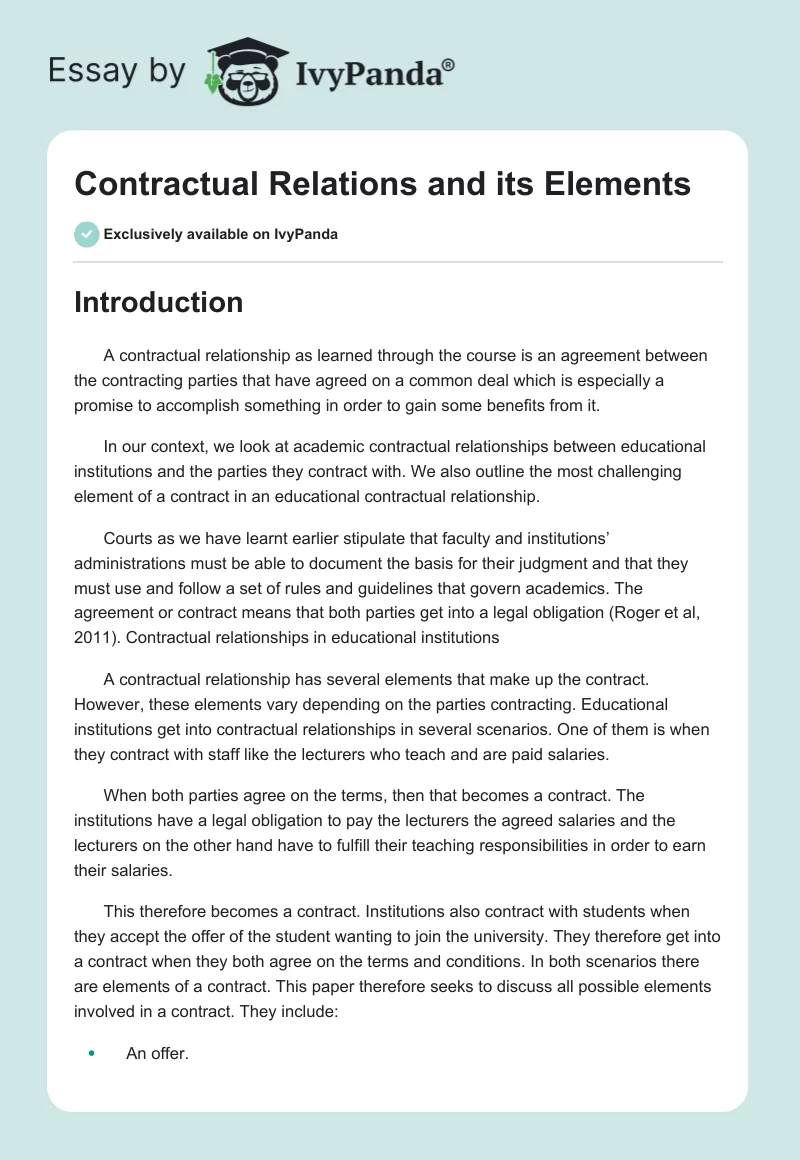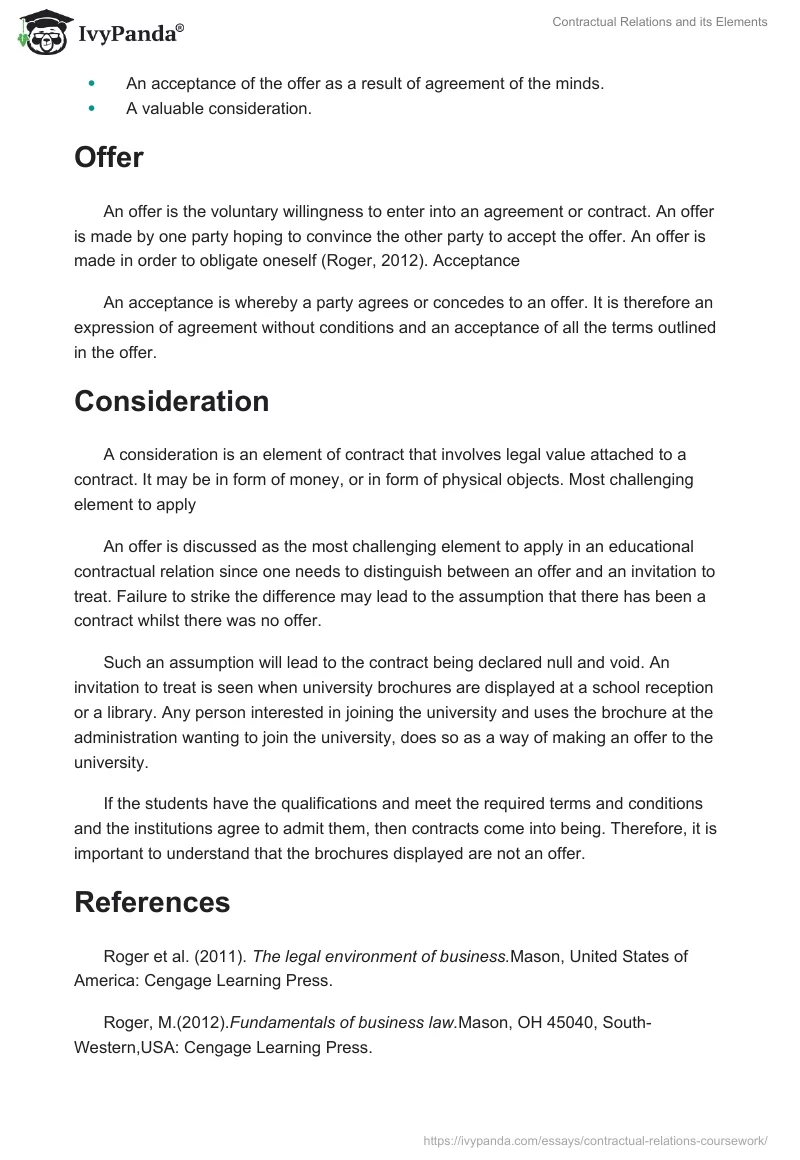Introduction
A contractual relationship as learned through the course is an agreement between the contracting parties that have agreed on a common deal which is especially a promise to accomplish something in order to gain some benefits from it.
In our context, we look at academic contractual relationships between educational institutions and the parties they contract with. We also outline the most challenging element of a contract in an educational contractual relationship.
Courts as we have learnt earlier stipulate that faculty and institutions’ administrations must be able to document the basis for their judgment and that they must use and follow a set of rules and guidelines that govern academics. The agreement or contract means that both parties get into a legal obligation (Roger et al, 2011). Contractual relationships in educational institutions
A contractual relationship has several elements that make up the contract. However, these elements vary depending on the parties contracting. Educational institutions get into contractual relationships in several scenarios. One of them is when they contract with staff like the lecturers who teach and are paid salaries.
When both parties agree on the terms, then that becomes a contract. The institutions have a legal obligation to pay the lecturers the agreed salaries and the lecturers on the other hand have to fulfill their teaching responsibilities in order to earn their salaries.
This therefore becomes a contract. Institutions also contract with students when they accept the offer of the student wanting to join the university. They therefore get into a contract when they both agree on the terms and conditions. In both scenarios there are elements of a contract. This paper therefore seeks to discuss all possible elements involved in a contract. They include:
- An offer.
- An acceptance of the offer as a result of agreement of the minds.
- A valuable consideration.
Offer
An offer is the voluntary willingness to enter into an agreement or contract. An offer is made by one party hoping to convince the other party to accept the offer. An offer is made in order to obligate oneself (Roger, 2012). Acceptance
An acceptance is whereby a party agrees or concedes to an offer. It is therefore an expression of agreement without conditions and an acceptance of all the terms outlined in the offer.
Consideration
A consideration is an element of contract that involves legal value attached to a contract. It may be in form of money, or in form of physical objects. Most challenging element to apply
An offer is discussed as the most challenging element to apply in an educational contractual relation since one needs to distinguish between an offer and an invitation to treat. Failure to strike the difference may lead to the assumption that there has been a contract whilst there was no offer.
Such an assumption will lead to the contract being declared null and void. An invitation to treat is seen when university brochures are displayed at a school reception or a library. Any person interested in joining the university and uses the brochure at the administration wanting to join the university, does so as a way of making an offer to the university.
If the students have the qualifications and meet the required terms and conditions and the institutions agree to admit them, then contracts come into being. Therefore, it is important to understand that the brochures displayed are not an offer.
References
Roger et al. (2011). The legal environment of business.Mason, United States of America: Cengage Learning Press.
Roger, M.(2012).Fundamentals of business law.Mason, OH 45040, South- Western,USA: Cengage Learning Press.


